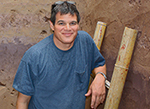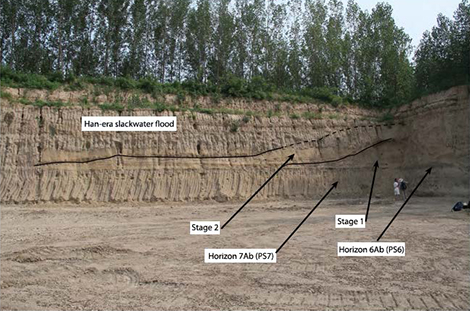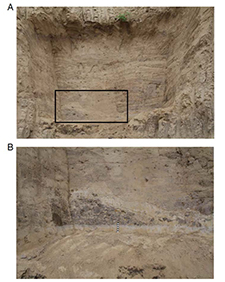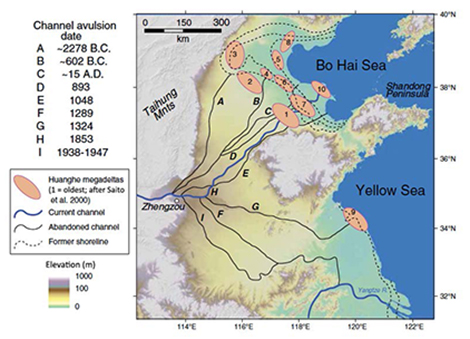https://www.youtube.com/watch?v=irGmbwqqUNs
All Go players know about the Blood-Vomiting Game, a four-day-long game of Go played in Japan in 1835. The match featured three “ghost moves” allegedly brought to the victorious player by ghosts, and ended with the losing player vomiting blood onto the board and collapsing.
All the spectators saw was two men sitting on either side of a board; but within their minds, the players were locked in struggle no less violent because it was completely silent.
One hundred eighty years later, two young Go players at Brown University, Cole Pruitt and Will Lockhart, gambled that they would be able to make an audience feel that hidden intensity, tension — and even violence — when they decided to make a documentary film about Go.
The film, called "The Surrounding Game," is now in post-production, said Pruitt, who is currently a graduate student in chemistry at Washington University in St. Louis.
Go belongs to the class of no-luck board games, along with chess and Othello. Two players attempt to enclose as much space as possible by placing black or white stones on the intersections of a 19-by-19 grid. The rules are simple enough that a child can learn them in minutes, but the game is also — paradoxically — complex enough that players must study for years to become professional Go players, a lifetime title accorded to only the strongest players.
The film follows two of America's top young players as they compete to win professional rank. Andy Liu, a Chinese-born American with very little formal training, has become one of the strongest players in North America, developing his own style by playing 20 games a day. Brooklyn-born Ben Lockhart (Will’s younger brother) has chosen to make Go his career and now lives in Korea, where he studies at a professional Go school.
Implicit in the players' choices is a dilemma. Can a game this subtle and difficult, which has been pursued as a fine art in Asia for millennia, be transplanted to America, which does not have the culture or the training system to support it, and favors entertainment that is more gladiatorial than cerebral?
Courtesy photo
Andy Liu and Evan Cho, a former Korean yunguseng (Go academy student) who is one of the strongest amateur players in the U.S., play Go on Chimney Rock in North Carolina in 2012.
One of four ancient Chinese arts
Go, invented more than 2,500 years ago, is one of the four ancient Chinese arts, together with painting, calligraphy and music.
Although Go was invented in China, Pruitt explains, its culture is rooted in medieval Japan, where talented disciples devoted their lives to Go by entering one of four rival Go houses, which were led by the strongest masters of the era.
Today, Chinese and Korean students as young as 5 begin training in special Go schools with the aim of becoming a Go professional. To have a chance of going pro, they must abandon a high-school education and study nothing but Go for years on end. Among the game's elite professionals, international tournaments offer hundred-thousand-dollar prizes and are simulcast on television.
Outside of East Asia, the story is very different. The American Go Association, founded by chess master Edward Lasker and friends in 1935, is one of the oldest Western Go associations, but it never has supported a professional Go system.
At the climax of “The Surrounding Game,” the American Go Association holds its first professional-certifying Go tournament, with both Liu and Ben Lockhart competing to become the first Western-certified pro.
How to Kickstart a film
Making a film is an education in itself, said Pruitt. You learn a bit about running a business, production, grant writing, interviewing … a little bit of everything.
“The way this got started was that Will and I were invited to travel to China in 2011 as part of a college Go delegation, a trip hosted by the ING (Ing Chang-ki) Foundation, a philanthropic organization that promotes Go and runs the world’s largest tournament,” said Pruitt.
The next year, they were returning by bus from a Go tournament when Will Lockhart, many of whose family members work in the film industry, said he had been thinking about making a film about Go.
Pruitt was immediately enthusiastic, and a few weeks later, they asked the ING Foundation for enough funding to film a three-minute trailer they could shop around to see if there was any interest. They filmed the trailer and launched a Kickstarter campaign, beating their funding goal by $10,000 as word of the documentary spread in the Go community. “So we were off to the races,” Pruitt said.
Pruitt, who already had been admitted to graduate school at WUSTL, asked for and was granted a gap year to work on the film.
Courtesy photo
A gathering of some of the film team (from left): Kim Chaelim, a field producer/interpreter during shooting in Korea and a former Korean yunguseng (Go academy student); Will Lockhart, co-director; Lee Sedol, the world's top-ranked player;, Cole Pruitt, co-director; and Nik Gonzales, second camera.
Eighteen months later, the project has gathered 180 hours of footage filmed in China, Korea, Japan, the U.S. and Canada. Just this spring, the filmmakers won a film pitch contest at the American Documentary Film Festival in Palm Springs, Calif., bringing them one step closer to putting the finishing touches on the film.
“Originally, we had planned for a small production that would just take a year. But now it has grown into a feature-length film that we think will introduce Go to the U.S. and make a splash,” Pruitt said.
The filmmakers hope to premiere “The Surrounding Game” in 2015 at several national film festivals, make it available online through digital download and DVD and, if possible, screen it in theaters nationwide.
What makes Go special?
Pruitt didn’t really learn the game until spring of his junior year at Brown, when he stayed at school after the term ended to finish a project. With his evenings free, he decided to devote them to learning Go. “A week later,” he said, “I knew that I would be playing Go for the rest of my life.”
What is it about Go that inspires this kind of passion?
Game theorists would say it is a very clean game. “It’s a game of perfect information,” said Pruitt. “There’s no luck, there’s no dice, you can’t hide behind the cards or anything like that. Everything’s out in front of you, and you have enough time to make decisions between turns.”
“Since there are only four simple rules, it doesn’t sound like play should be complicated,” Pruitt said.
But if Go is one of the simplest games, it is also one of the most complex.
There are several reasons for its depth. The dimensions of the board are unusually large (stones can placed at any of 361 intersections), so the number of possible sequences of moves quickly increases and then explodes. In fact, the number of possible games of Go far exceeds the number of atoms in the observable universe, ensuring that individual games are never played more than once.
Another reason Go is challenging is that intermediate positions are notoriously hard to evaluate. It can be difficult to tell whether a group of stones is surrounding or being surrounded and which player is ahead. In chess, by contrast, computers can assign each piece a numerical value and add up each piece on the board to 'measure' the favorability of a position.
During a Go game, good players can look ahead more than 30 moves, and they rely on this analytical ability to win local battles involving small groups of stones. But to evaluate the full board and their global position, players rely on the intuitive and creative parts of the brain.
This aspect of the game has rubbed off on its vocabulary. Players look for “ladders” and “nets,” “living” and “dead” groups, “dumplings” and “stone towers.” Because hidden sequences may become favorable much later in the game, players use the Japanese term aji, or flavor, to describe latent possibilities available to key stones.
Because of its complexity and subtlety, a game of Go can become a virtual world in which players can immerse themselves, losing track of the world around them. “Many people play Go online,” said Pruitt. “That’s how they get their fix. They have this place, this engaging alternative world that they can enter at will. That can be very addictive.”
An endless fascination
But is living in an alternative world an acceptable way to spend your life in America? What if you’re earning “Linden” dollars building wings with animation software for avatars in "Second Life"? What if you’re a mathematician? What if you’re a pure mathematician? What if you’re a string theorist? What if you’re a poet? What if you’re a poet who never has been published?
“In the U.S., if you spend your life playing a game, what are you? A freak? A sad shell?” said Pruitt. “In Japan, a life spent playing Go is not a life wasted; it’s a life spent cultivating an art. In some ways, its one of the highest callings you can have.”
That tension, he said, is central to “The Surrounding Game.”

















































